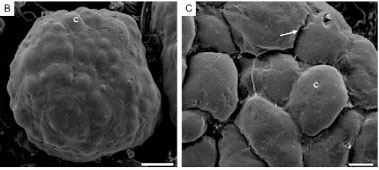The insect fat body plays major roles in the intermediary metabolism, in the storage and transport of haemolymph compounds and in the innate immunity. Here, the overall structure of the fat body of five species of mosquitoes (Aedes albopictus, Aedes fluviatilis, Culex quinquefasciatus, Anopheles aquasalis and Anopheles darlingi) was compared through light, scanning and transmission electron microscopy. Generally for mosquitoes, the fat body consists of lobes projecting into the haemocoel and is formed by great cell masses consisting of trophocytes and oenocytes. Trophocytes are rich in lipid droplets and protein granules. Interestingly, brown pigment granules, likely ommochromes, were found exclusively in the trophocytes located within the thorax and near the dorsal integument of Anopheles, which is suggestive of the role these cells play in detoxification via ommochrome storage. This study provides a detailed comparative analysis of the fat body in five different mosquito species and represents a significant contribution towards the understanding of the structural-functional relationships associated with this organ.
fat body; trophocyte; ommochrome; Aedes - Culex - Anopheles








